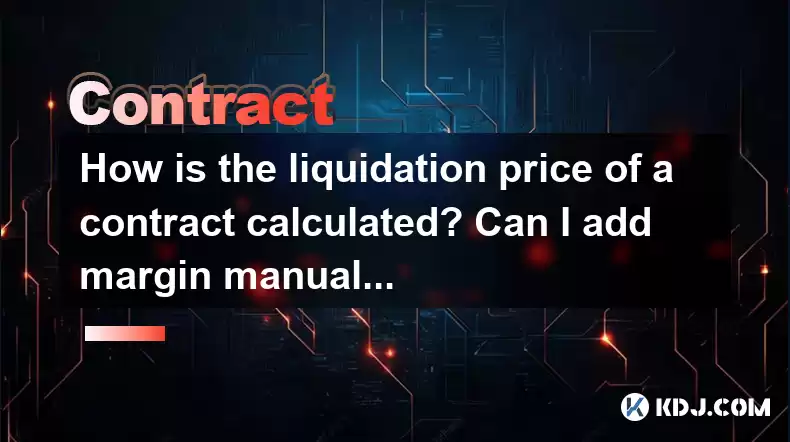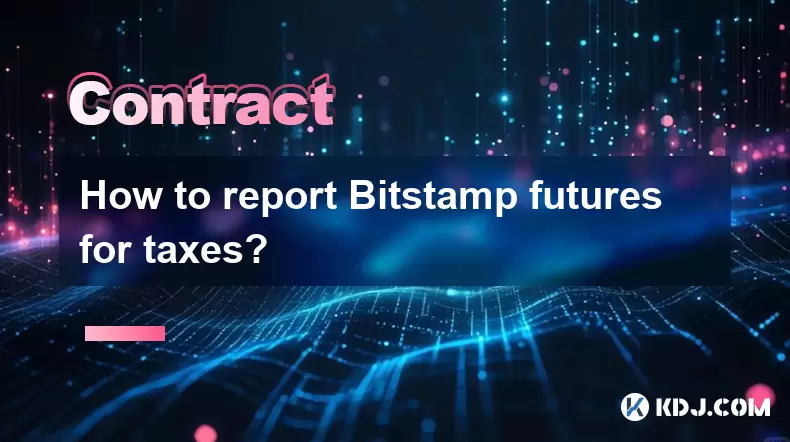-
 Bitcoin
Bitcoin $114400
1.32% -
 Ethereum
Ethereum $3499
2.20% -
 XRP
XRP $2.922
4.26% -
 Tether USDt
Tether USDt $0.0000
0.03% -
 BNB
BNB $752.6
1.53% -
 Solana
Solana $161.8
1.64% -
 USDC
USDC $0.9999
0.01% -
 TRON
TRON $0.3267
1.32% -
 Dogecoin
Dogecoin $0.1991
3.02% -
 Cardano
Cardano $0.7251
3.29% -
 Hyperliquid
Hyperliquid $38.32
3.36% -
 Stellar
Stellar $0.3972
7.58% -
 Sui
Sui $3.437
2.74% -
 Chainlink
Chainlink $16.29
3.65% -
 Bitcoin Cash
Bitcoin Cash $545.3
3.70% -
 Hedera
Hedera $0.2482
7.49% -
 Ethena USDe
Ethena USDe $1.001
0.03% -
 Avalanche
Avalanche $21.40
2.02% -
 Toncoin
Toncoin $3.579
1.56% -
 Litecoin
Litecoin $109.3
2.20% -
 UNUS SED LEO
UNUS SED LEO $8.951
-0.18% -
 Shiba Inu
Shiba Inu $0.00001220
2.75% -
 Polkadot
Polkadot $3.613
2.99% -
 Uniswap
Uniswap $9.173
3.78% -
 Monero
Monero $302.6
2.62% -
 Dai
Dai $0.0000
0.00% -
 Bitget Token
Bitget Token $4.320
1.52% -
 Pepe
Pepe $0.00001048
3.40% -
 Cronos
Cronos $0.1314
4.33% -
 Aave
Aave $259.4
3.54%
How is the liquidation price of a contract calculated? Can I add margin manually?
The liquidation price in crypto trading is crucial for managing risk; it can be adjusted by adding margin, which helps prevent automatic position closure.
Apr 27, 2025 at 08:49 pm

The liquidation price of a contract is a critical concept in the world of cryptocurrency trading, particularly when dealing with leveraged positions. Understanding how this price is calculated can help traders manage their risk more effectively. Additionally, knowing whether you can add margin manually to your positions is essential for maintaining control over your trades. Let's delve into these topics in detail.
Understanding Liquidation Price
Liquidation price is the price at which a trader's position is automatically closed by the exchange to prevent further losses. This occurs when the account's equity falls below the maintenance margin requirement. The calculation of the liquidation price depends on several factors, including the entry price, the amount of leverage used, and the position size.
For a long position, the liquidation price is calculated as follows:
[ \text{Liquidation Price}_{\text{Long}} = \frac{\text{Entry Price} \times \text{Size} \times \text{Leverage}}{\text{Size} \times \text{Leverage} + \text{Initial Margin}} ]
For a short position, the calculation is slightly different:
[ \text{Liquidation Price}_{\text{Short}} = \frac{\text{Entry Price} \times \text{Size} \times \text{Leverage}}{\text{Size} \times \text{Leverage} - \text{Initial Margin}} ]
These formulas take into account the initial margin, which is the amount of capital required to open a position. The leverage amplifies the position size, but it also increases the risk of liquidation.
Factors Affecting Liquidation Price
Several factors can influence the liquidation price of a contract. Leverage is one of the most significant factors. Higher leverage means a smaller price movement can trigger liquidation. Position size also plays a crucial role; larger positions require more margin and can be liquidated at a higher price. Market volatility can cause rapid price changes, increasing the likelihood of hitting the liquidation price. Lastly, fees and funding rates can affect the account's equity, indirectly impacting the liquidation price.
Manual Margin Addition
Adding margin manually to a position is a common practice among traders to prevent liquidation. This process, known as adding margin or topping up margin, allows traders to increase their account's equity, thereby reducing the risk of liquidation.
To add margin manually, follow these steps:
- Log into your trading platform: Access your account on the exchange where you have open positions.
- Navigate to the positions section: Find the section where your open positions are listed.
- Select the position: Click on the position to which you want to add margin.
- Choose the margin addition option: Look for an option labeled "Add Margin" or "Top Up Margin."
- Enter the amount: Specify the amount of margin you wish to add. Ensure you have sufficient funds in your account.
- Confirm the transaction: Review the details and confirm the addition of margin.
By adding margin manually, traders can increase their maintenance margin, which in turn can lower the liquidation price, providing a buffer against market fluctuations.
Calculating Liquidation Price with Added Margin
When you add margin to a position, the liquidation price changes. The new liquidation price can be recalculated using the updated initial margin. For a long position, the new liquidation price would be:
[ \text{New Liquidation Price}_{\text{Long}} = \frac{\text{Entry Price} \times \text{Size} \times \text{Leverage}}{\text{Size} \times \text{Leverage} + \text{Initial Margin} + \text{Added Margin}} ]
For a short position, the formula becomes:
[ \text{New Liquidation Price}_{\text{Short}} = \frac{\text{Entry Price} \times \text{Size} \times \text{Leverage}}{\text{Size} \times \text{Leverage} - \text{Initial Margin} - \text{Added Margin}} ]
These formulas show that adding margin increases the denominator, which in turn lowers the liquidation price, providing more room for price movements before the position is liquidated.
Practical Example of Liquidation Price Calculation
Let's consider a practical example to illustrate how liquidation price is calculated and how adding margin affects it. Suppose you open a long position on Bitcoin with the following parameters:
- Entry Price: $30,000
- Position Size: 1 BTC
- Leverage: 10x
- Initial Margin: $3,000
Using the formula for a long position, the liquidation price would be:
[ \text{Liquidation Price}_{\text{Long}} = \frac{30,000 \times 1 \times 10}{1 \times 10 + 3,000} = \frac{300,000}{3,010} \approx 29,900.33 ]
Now, if you decide to add $1,000 to your margin, the new liquidation price would be:
[ \text{New Liquidation Price}_{\text{Long}} = \frac{30,000 \times 1 \times 10}{1 \times 10 + 3,000 + 1,000} = \frac{300,000}{4,010} \approx 29,925.19 ]
This example demonstrates how adding margin can lower the liquidation price, giving you more leeway before your position is liquidated.
Importance of Monitoring Liquidation Price
Monitoring the liquidation price is crucial for managing risk in leveraged trading. Regularly checking the liquidation price allows traders to understand how close their positions are to being liquidated. This knowledge can inform decisions about whether to add more margin, close the position, or adjust the leverage.
Using trading tools and platforms that provide real-time data on liquidation prices can be beneficial. Many exchanges offer features that alert traders when their positions are nearing liquidation, allowing for timely action to prevent losses.
FAQs
Q: Can the liquidation price change after opening a position?
A: Yes, the liquidation price can change after opening a position. Factors such as adding or withdrawing margin, changes in leverage, and fluctuations in the market price can all affect the liquidation price.
Q: Is it possible to avoid liquidation by adding margin at any time?
A: While adding margin can lower the liquidation price and provide more room for price movements, it is not always possible to avoid liquidation. If the market moves too quickly or if the added margin is insufficient, the position may still be liquidated.
Q: How does the type of order affect the liquidation price?
A: The type of order used to open a position does not directly affect the liquidation price. However, the entry price, which is determined by the order type, is a key component in calculating the liquidation price.
Q: Can I set a custom liquidation price on some exchanges?
A: Some advanced trading platforms may offer features that allow traders to set custom liquidation prices or use stop-loss orders to manage their positions more precisely. However, this is not a standard feature on all exchanges, and it depends on the platform's capabilities.
Disclaimer:info@kdj.com
The information provided is not trading advice. kdj.com does not assume any responsibility for any investments made based on the information provided in this article. Cryptocurrencies are highly volatile and it is highly recommended that you invest with caution after thorough research!
If you believe that the content used on this website infringes your copyright, please contact us immediately (info@kdj.com) and we will delete it promptly.
- Cold Wallet vs. MetaMask: A Web3 Wallet Revolution?
- 2025-08-04 06:30:12
- Chainlink Price Prediction: Bearish Continuation or a Bullish Reversal?
- 2025-08-04 06:35:12
- Bitcoin Whale Alert: Navigating Liquidation Risks in a Volatile Market
- 2025-08-04 07:10:12
- BNB Price Under Pressure: Navigating the Bearish Trend and Market Sentiment
- 2025-08-04 07:15:12
- Bitcoin Price Wobbles: Options Analysis Points to Bullish Undercurrent Despite Dip
- 2025-08-04 04:30:12
- Ark Invest, Coinbase, and Bitcoin: Decoding the Crypto Investment Landscape in NYC
- 2025-08-04 04:30:12
Related knowledge

Why is my Bitstamp futures position being liquidated?
Jul 23,2025 at 11:08am
Understanding Futures Liquidation on BitstampFutures trading on Bitstamp involves borrowing funds to open leveraged positions, which amplifies both po...

How to report Bitstamp futures for taxes?
Jul 30,2025 at 08:35am
Understanding Bitstamp Futures and Taxable EventsWhen trading Bitstamp futures, it’s essential to recognize that these financial instruments are treat...

Does Bitstamp offer inverse contracts?
Jul 23,2025 at 01:28pm
Understanding Inverse Contracts in Cryptocurrency TradingIn the realm of cryptocurrency derivatives, inverse contracts are a specific type of futures ...

What is the difference between futures and perpetuals on Bitstamp?
Jul 27,2025 at 05:08am
Understanding Futures Contracts on BitstampFutures contracts on Bitstamp are financial derivatives that allow traders to speculate on the future price...

How to find your Bitstamp futures trade history?
Jul 23,2025 at 08:07am
Understanding Bitstamp and Futures Trading AvailabilityAs of the current state of Bitstamp’s service offerings, it is critical to clarify that Bitstam...

Can I use a trailing stop on Bitstamp futures?
Jul 23,2025 at 01:42pm
Understanding Trailing Stops in Cryptocurrency TradingA trailing stop is a dynamic type of stop-loss order that adjusts automatically as the price of ...

Why is my Bitstamp futures position being liquidated?
Jul 23,2025 at 11:08am
Understanding Futures Liquidation on BitstampFutures trading on Bitstamp involves borrowing funds to open leveraged positions, which amplifies both po...

How to report Bitstamp futures for taxes?
Jul 30,2025 at 08:35am
Understanding Bitstamp Futures and Taxable EventsWhen trading Bitstamp futures, it’s essential to recognize that these financial instruments are treat...

Does Bitstamp offer inverse contracts?
Jul 23,2025 at 01:28pm
Understanding Inverse Contracts in Cryptocurrency TradingIn the realm of cryptocurrency derivatives, inverse contracts are a specific type of futures ...

What is the difference between futures and perpetuals on Bitstamp?
Jul 27,2025 at 05:08am
Understanding Futures Contracts on BitstampFutures contracts on Bitstamp are financial derivatives that allow traders to speculate on the future price...

How to find your Bitstamp futures trade history?
Jul 23,2025 at 08:07am
Understanding Bitstamp and Futures Trading AvailabilityAs of the current state of Bitstamp’s service offerings, it is critical to clarify that Bitstam...

Can I use a trailing stop on Bitstamp futures?
Jul 23,2025 at 01:42pm
Understanding Trailing Stops in Cryptocurrency TradingA trailing stop is a dynamic type of stop-loss order that adjusts automatically as the price of ...
See all articles

























































































